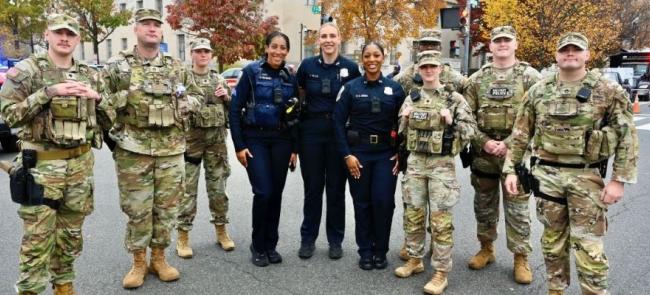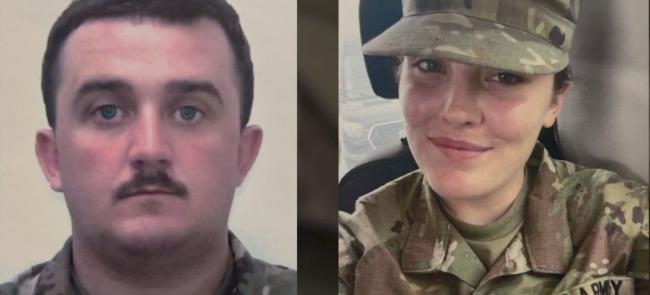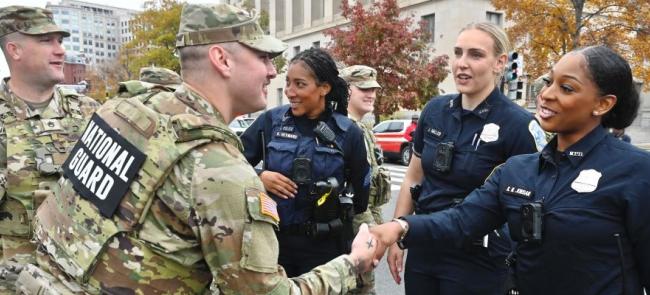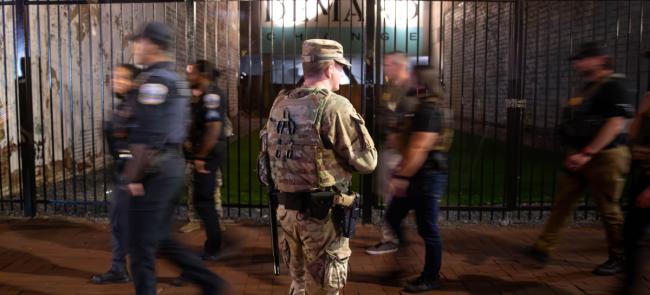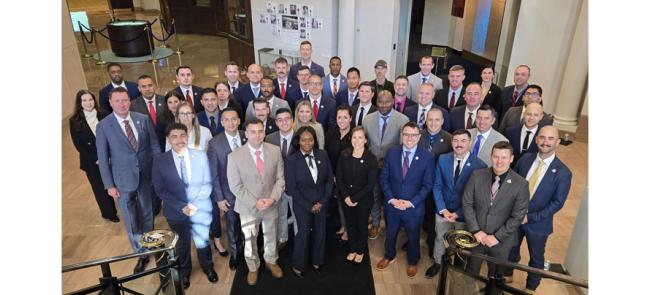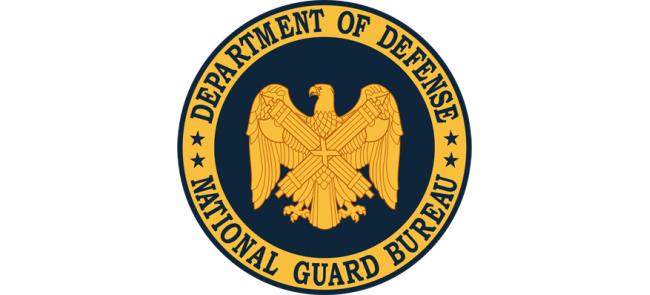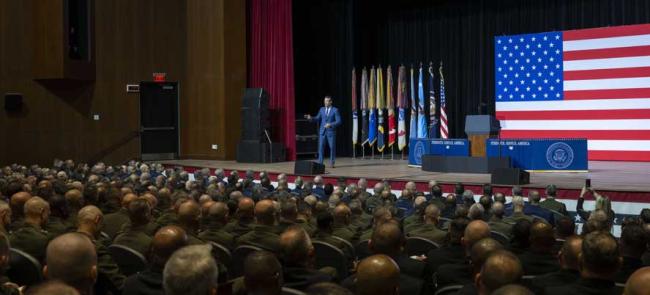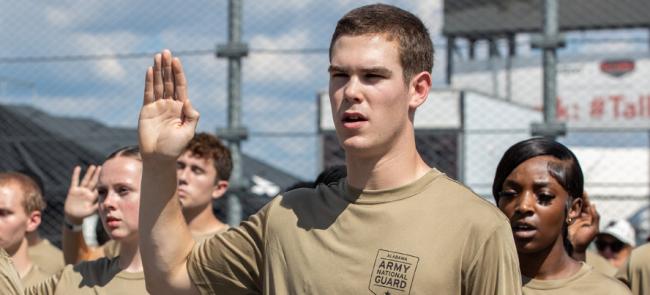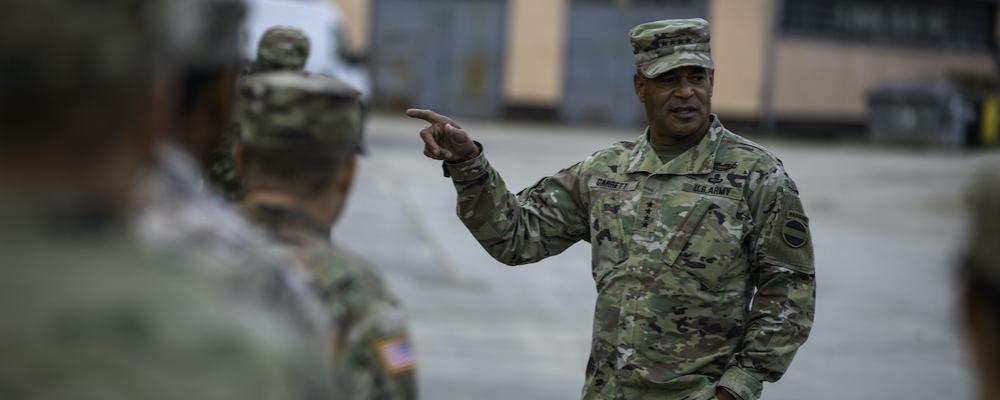
Gen. Michael X. Garrett is looking for some tough conversations.
The general who oversees training and readiness for most of the Army as the head of U.S. Army Forces Command spoke early Monday, during one of the first events of the annual Association of the U.S. Army meetings in Washington, D.C.
Garrett, who commands 215,000 active component and 190,000 Army Reserve soldiers, while providing training and readiness oversight of the Army Guard, praised the efforts of Guard and Reserve soldiers over the past 20 months, amid continued overseas deployments, the ongoing COVID-19 pandemic and numerous domestic missions.
“It takes blood, sweat and tears. And it takes your hearts and your souls,” the general said of the efforts of the reserve components. “I will never challenge the blood, sweat and tears and heart and soul Army National Guard or Army Reserve soldiers put into their teams and into their training.”
But Garrett said there are times when the readiness of the force amid such a difficult operational environment concerns him.
“This year we have been fighting through the most deadly pandemic of our time. We have sent Army National Guard formations to bring stability in the wake of an attempted insurrection just 16 blocks away from this very convention center. We recognized the 20-year anniversary of the terror attacks that changed our nation and our military forever. We ended the longest war in American history. And with all of this, you’re still fighting fires, serving on our borders and keeping our Afghan partners safe,” he said.
The nation “cannot expect any more of Army Guard and Army Reserve soldiers than you are already giving,” Garrett added. “Am I and the Army expecting too much from you?”
The general’s remarks were part of the Maj. Gen. Robert G. Moorhead National Guard/Army Reserve Forum, which traditionally is one of the first events of the annual AUSA meetings. Other speakers at the event included Lt. Gen. Jon A. Jensen, the director of the Army Guard, and Lt. Gen. Jody J. Daniels, the chief of the Army Reserve.
In addition to being of the opening events of AUSA, the forum also served as an opportunity to recognize outstanding Guard and Reserve units.
One unit from each component was honored with the Gen. Walter T. Kerwin Jr. Readiness Award, recognizing the unit with the highest level of readiness in the previous training year. The award is presented jointly by AUSA, NGAUS and the Reserve Officers Association.
This year’s Guard recipient was the South Dakota Army Guard’s 152nd Combat Sustainment Support Battalion.
Jensen, the Army Guard director, said the three generals represented a close, tight-knit team responsible for most of the Army’s readiness.
He highlighted the previous 18 months, during which time “our nation and our Army have experienced really unparalleled events” while focusing on the support to combatant commanders.
While the Army Guard lost some readiness in 2020 amid the height of the pandemic, Jensen said it regained momentum in the latest training year, with five Combat Training Center rotations, the most since 2005, three division warfighter exercises and three eXportable Combat Training Center rotations.
He also highlighted real world missions, including the 11,000 soldiers deployed to the U.S. Central Command area of operations, the numerous states who supported the evacuation and withdrawal of U.S. forces and allies from Afghanistan and numerous domestic missions, including short notice and emerging mission not seen in a century.
“Our Army National Guard soldiers were always ready to support the needs of our nation, the needs of our states and the needs of their communities,” Jensen said.
Those missions were not lost on Garrett, who repeatedly praised the Reserve Component for its work. He particularly praised those M-day Guardsmen and TPU Reservists who balance their Army careers with civilian jobs.
Garrett said his father was an active-duty soldier. He is an active-duty soldier. And he has said in the past that he’s spent his entire life in and around the Army. But that isn’t completely true.
“I have really spent my entire life around less than half of the Army,” he said.
Because while M-day soldiers and active component troops have many things in common – the same core values, similar experiences in training and in combat, a strong sense of duty, discipline and selfless service – they are not the same.
“I acknowledge that I have not experienced the life of a non-mobilized Guard or Reserve soldier. I think that’s why anyone that knows me would tell you that I take every opportunity to gush on our National Guard and our Army Reserve soldiers. It has been my honor to serve alongside many of you and I appreciate your capabilities in training and in combat,” Garrett said.
He added that he was impressed by how the Guard and Reserve meets the demands made on soldiers and their families.
“To be honest, I’m not sure I could do it,” he said.
While some in the force will reject the notion that the Guard is doing too much, Garrett said there are different perspectives and not all Guardsmen may want higher standards, longer days and more Army related calls and emails during the week.
“At what point and how do we consider better managing our expectations for the reserve component?” he asked.
At AUSA and at future training events, Garrett said he will be seeking out those perspectives. He said 2022 is an opportunity to make adjustments, beginning with the Army’s new readiness model, which is meant to bring more stability and predictability to the force.
It won’t be an easy conversation, he said. But it’s the right one to have.



